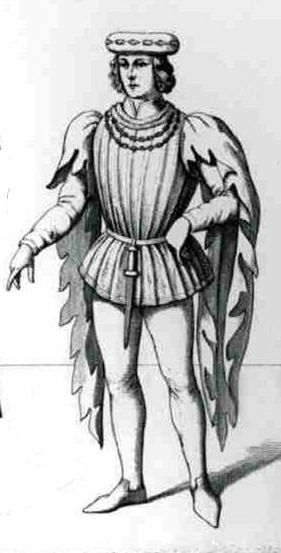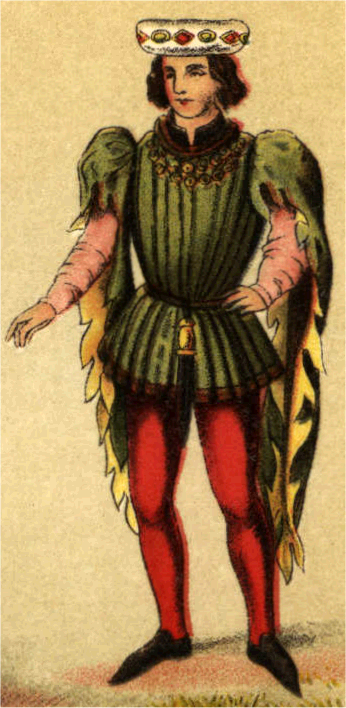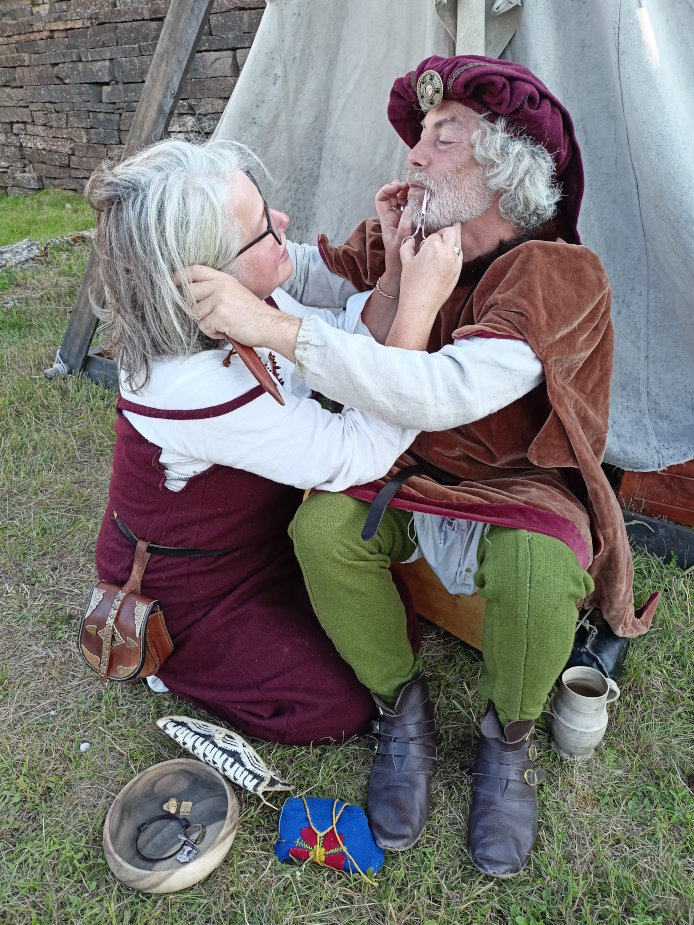Recreating the dress of Jean de Montagu
==========
Added pictures of patina
Changed spelling of hoses to hosen
2024-08-18
==========
Initial article version
To-do
==========
Spell-check
Image of shoes
A fancy banquet dress is always nice to have. That's what I thought back in the first years of this millennia when I received an invitation for a fancy banquet at an old castle. Identifying a dress to sew was harder and it took some time creating. However, I still have some parts of it in my possession more than 20 years later.
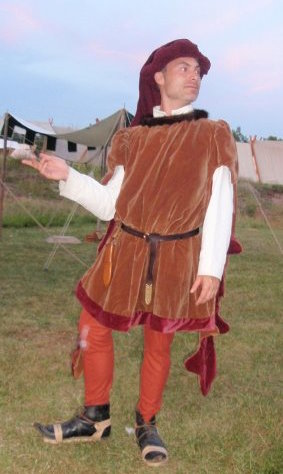
Background
Well, I was going to a big historical event at Bollerup castle in Skåne (Sweden) and since the castle at the site was a 15th century castle I figured a 15th century dress would be nice.
I looked through a few of my books on historical dress and in the book The complete costume history by Auguste Racinet I found an image labelled
Gérard de Montaigu.
Son of a duke.
Died 1415 at the battle of Agincourt.
There are different spellings of the family name of the house of Montaigu/Montagu confusing any searches for them.
There also seem to be two Gérards int the family. The older Gérard was the kings secretary and died 1391.
The younger Gérard was the son who ended up as the bishop of Paris and died in 1420.
This was before Internet search engines so the book was the only source, alongside the Known World Handbook by SCA (Society for Creative Anacronism).
The image in the book was also tiny, even with magnifying glass it was hard to view the details.
I took the liberty to change some of the stuff in the garment for example the hat and the colors of the inside of the arms of the houppelande.
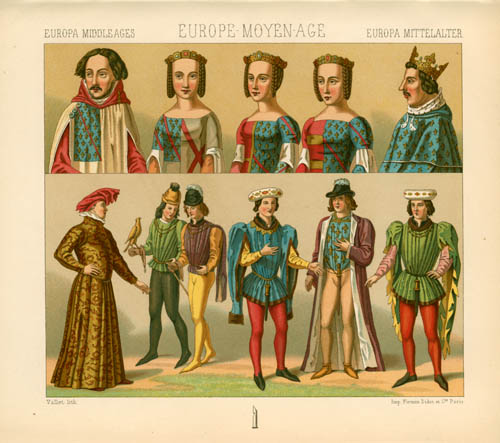
I don't have the book in my possession anymore, but I figured the dress looked nice and among all the other houppelandes this had arm sleeves that I could eat with without swiping everything of the table with the sleaves.
While trying to find the picture again it seems the original image was mis-labelled. Apparently, the images that look similar is of Gérard's father, Jean de Montagu.
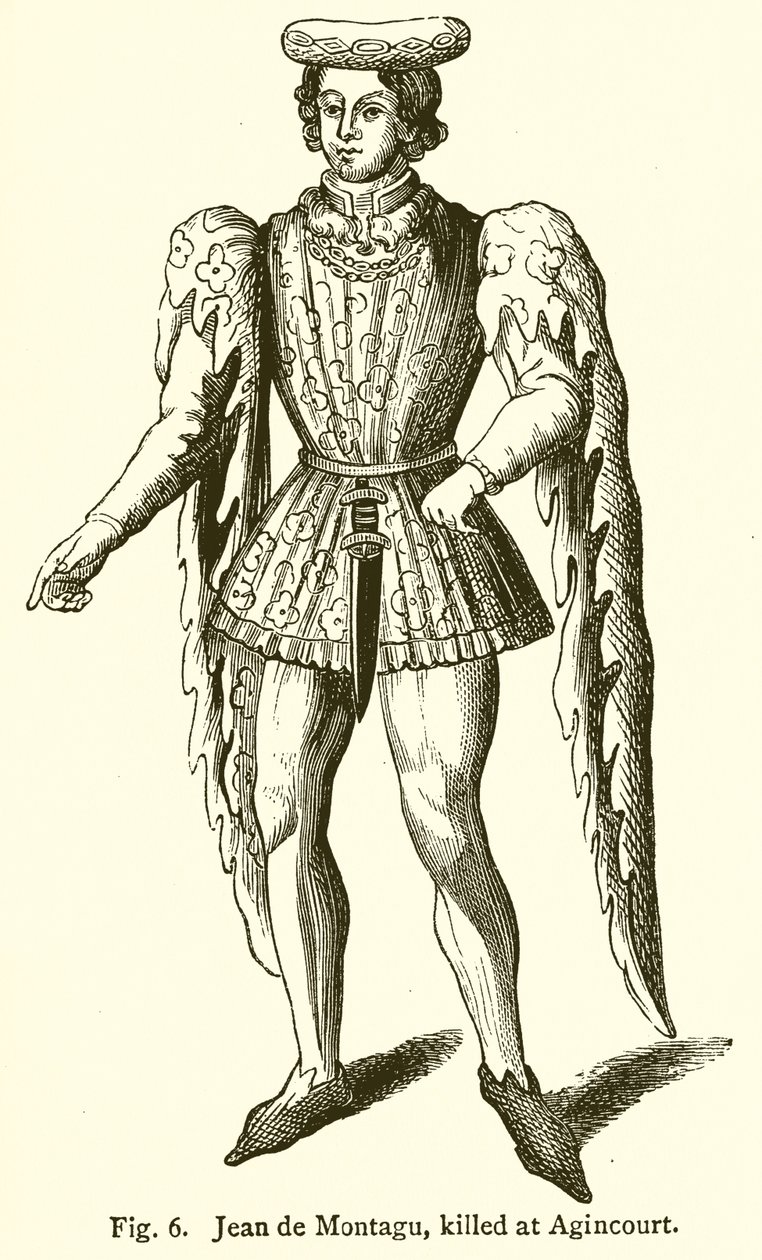
Dress creation
The picture I had as inspiration depicted the full dress consisting of:
- A turban style red or purple hat with a piece of extra cloth on top and a lining with fringes
- A wide houppelande style green coat with long leafed sleeves with red insides
- A bright under-shirt
- Tight madder-red hoses
- Dark leather shoes
- Low wooden patinas with hinges strapped to the shoes
I also assumed the wearer wore breaches under the houppelande. Those were not depicted in the image.
Although I'm colour-blind I had help choosing the colours of the clothing items to match the original image.
Disclaimer
Bear in mind this was around the year 2001 so I still had a lot to learn about medieval dress. Both the choice of fabric, the sewing style, and way of wearing the clothes would be very different if I made a similar attempt today.
Parts of the dress - inside and out
Breaches
The breaches I wore at the occasion was of the H-breaches style that was worn tucked into the hoses.
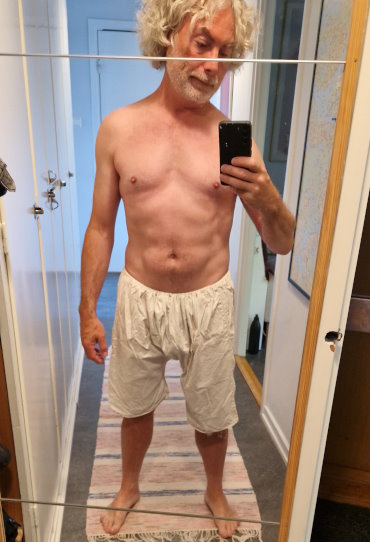
I wrote a whole article about breaches. If you are interested and understand Swedish you may read it.
Hosen
The hose I'd already in my possession. I'd sewn them earlier the same year in an itchy woollen fabric.
I've got other hosen I like more, but since these itch they are very well preserved and to this date they are my hoses for finer occasions while the more comfortable ones are for daily regular use.
The hosen are fastened to a belt worn under the under-tunic.
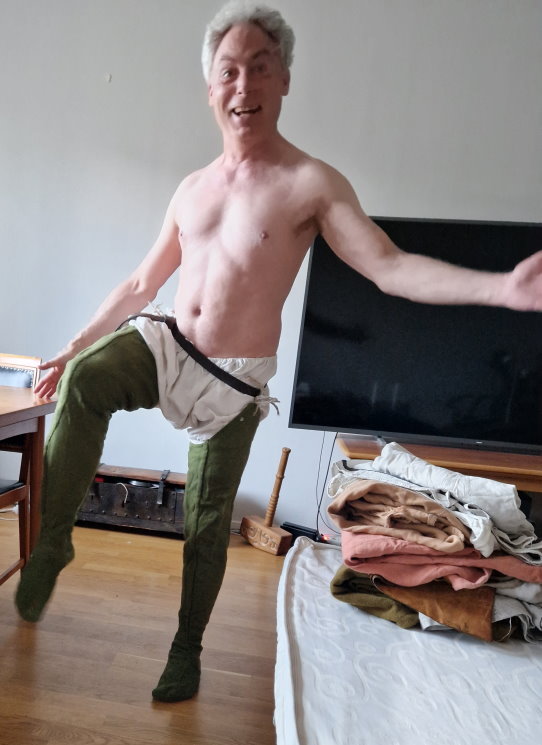
Shirt
The shirt/under-tunic was made from linen. It's only visible from the
I've written an article about under-tunic creation.
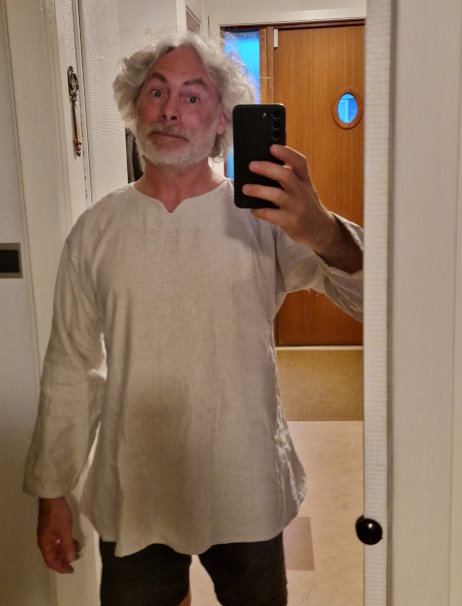
Hat
The hat also has survived. From the very start I've used the same brooch as front decoration. I'm still very doubtful a 15th century nobleman would use a brooch like that, but I find it enhances the look.
The hat is basically a wide beret with a flap on top. The flap is lined with woven bands with metal threads in them. In the light of candles or a fireplace they glow in a mesmerizing way.
The bottom edge of the flap has fringes that tickles the neck when worn.
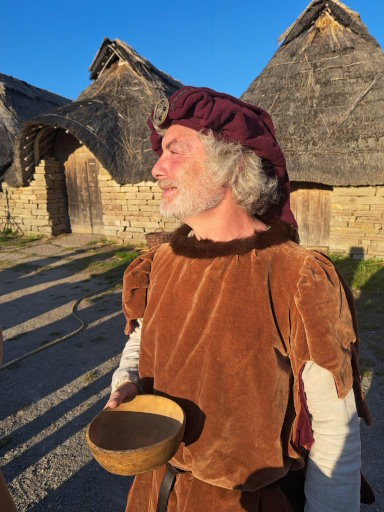
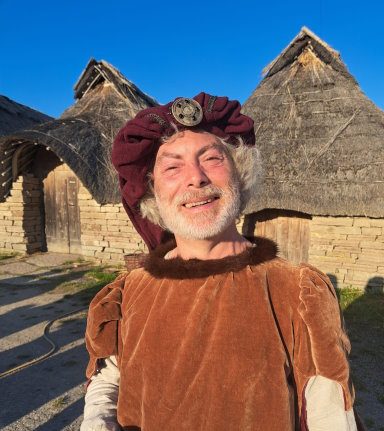
Houppelande
The houppelande is of course the centre piece of the dress.
It was sewn on sewing machine and made from old cotton velvet curtains that I had a lot of fabric from - and in the two different colours, although not in the same as the picture I was striving to recreate, but at least in two different colors of the same fabric.
For neck and bottom lining I used pieces of an old fur coat. It is really soft fur.
For unknown reasons I also decided to line the houppelande with linen on the whole inside. That turned out to be a horrible mistake since it got terribly warm by that.
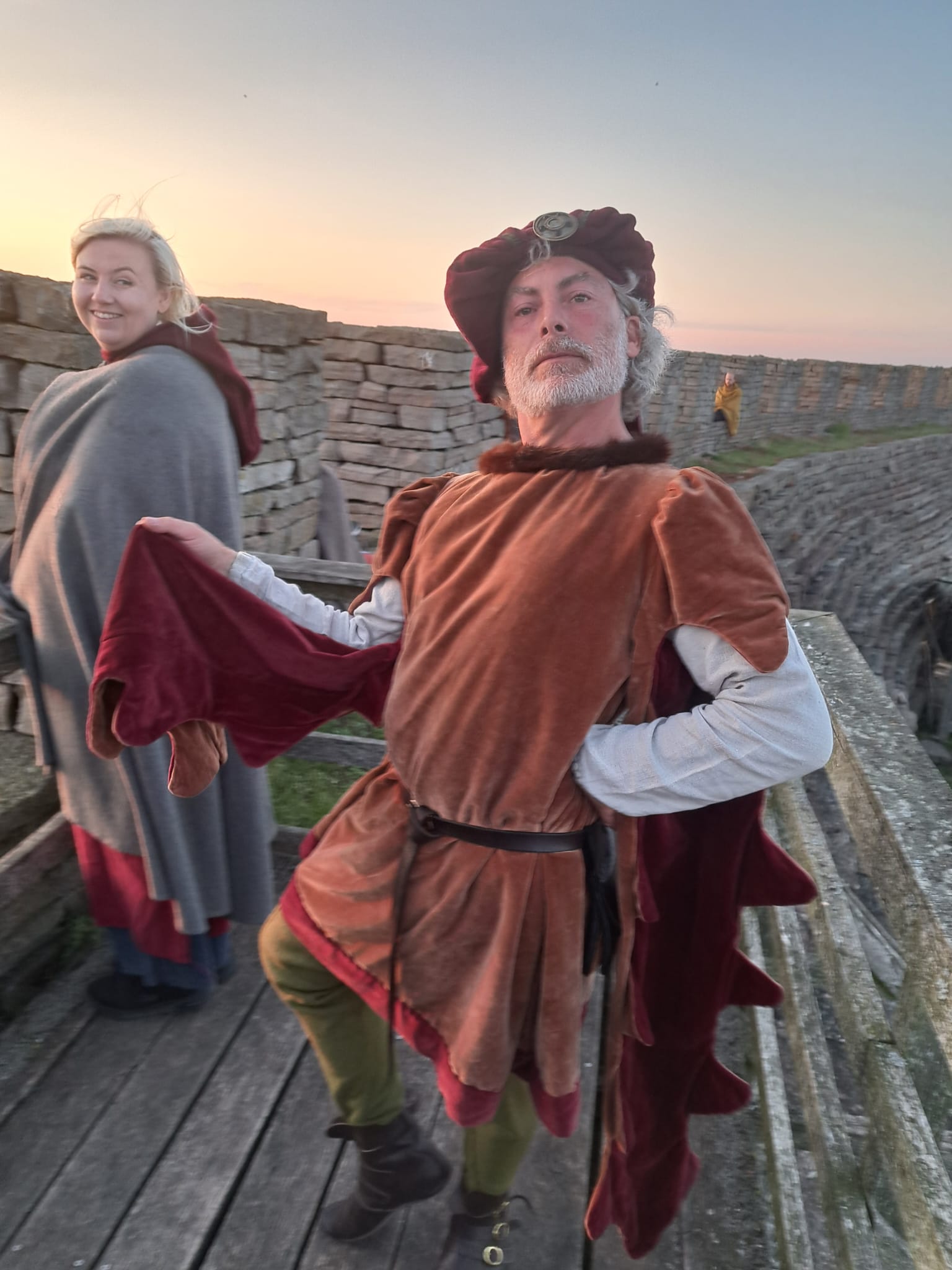
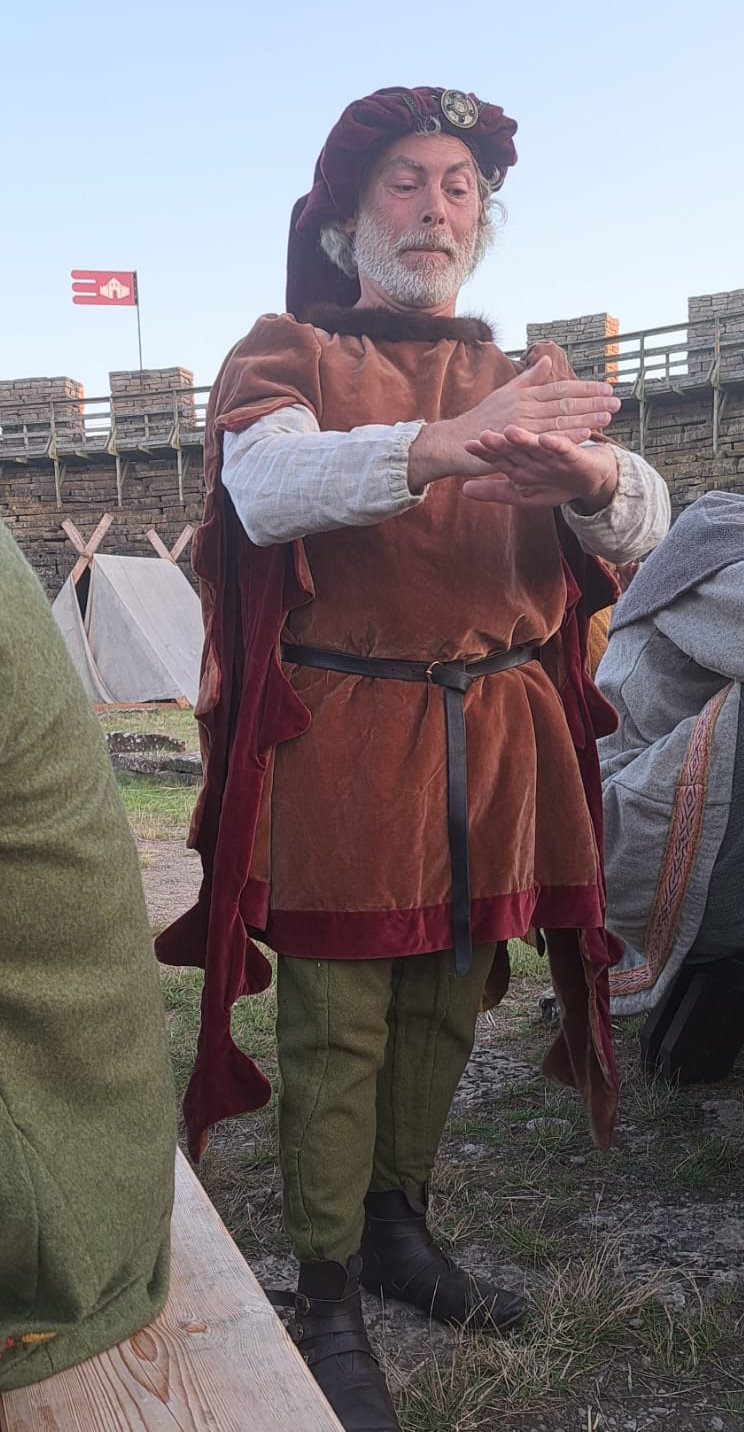
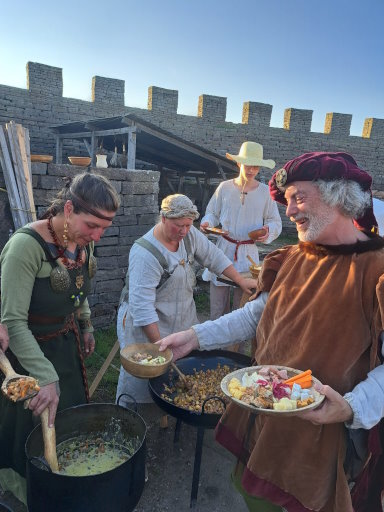
As a sidenote this houppelande has had its own life-journey. After a year or two I lend it to a friend. He used it for a live roleplay event.
For reasons un-known it was not returned and I forgot about it. Years later I was looking for it, realized I'd lend it to someone but could not remember who.
It felt a little sad, but I realized it was gone - until 15 or so years later when I got contacted on Facebook Messenger by a friend who was moving out from his apartment.
He'd found a piece of clothing and wondered if it might be mine. Now he lived far away, but at the Medeltidsveckan på Gotland
a few months later the ceremonial return was performed.
The houppelande was now a bit torn, but it was quickly mended and now I've worn it again at another banquet. Some of the pictures in this article is from that banquet at Hantverkslägret
at Öland island.
Shoes
The shoes were long and pointy and a hasty mess of last-minute sewing.
Soon after coming home from this weekend, I threw them away.
Today I'd probably worn shoes like my 15:th century high boots.
Patinas
Patinas are wooden soles for shoes that may be worn when it's bad weather or only to gain height to look impressive.
My patinas were of course based on the image I had in front of me. I used what wood I had at hand, which happened to be a plank of ash wood. The original image also seemed to display hinges on the patinas, and I made the hinges from leather. Leather was also used for straps to hold the patinas in place.
Since then, I seem to have lost one of my patinas like a Cinderella at the castle ball. Only one remain, but I kept it for display at certain type of fairs.
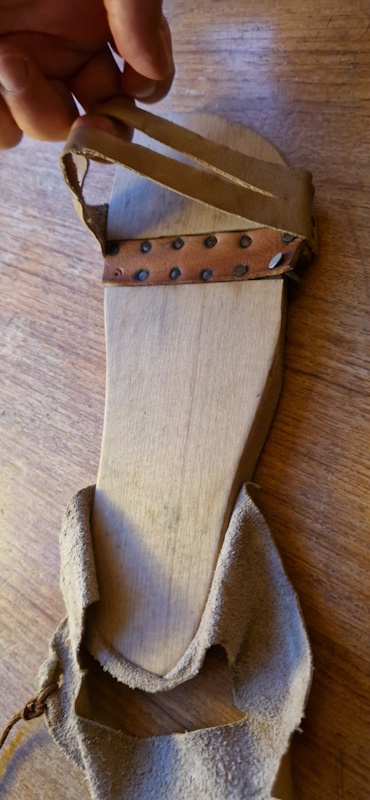
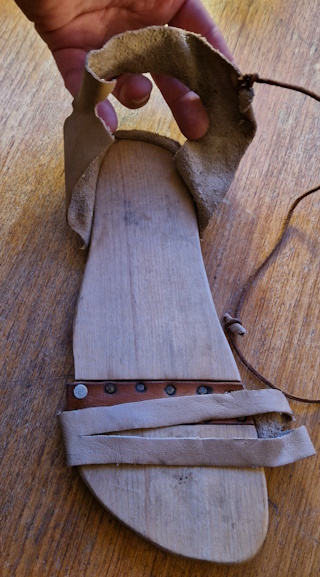
Lessons learned
- It's really fun engaging in a project of recreating a full dress. You learn about the person behind and a lot about the zeitgeist at the time.
- Do not line clothes if you don't have to. They get really warm so you can barely find occasions to wear them.
-
Be picky about fabric. It's a bit sad and discouraging to spend time sewing something only to realize it was the wrong fabric.
The houppelande for example would be beautiful and I'd wear it with pride if it was sewn in wool or brocade, but not in cotton velvet like it is now.
The same goes with the hat. It's made from a fleece like material and trimmed with linen for sturdiness. Of course wool would have been the obvious choice. -
The houppelande creases should probably be sewn or at least pressed to be preserved for more than fifteen minutes.
I might also have gained a few kilos since the garment was first created, making it un-intentionally tight... - It's hard for the puffy houppelande shoulders to stay puffy. I should probably come up with some idea to puff it up.
- Don't be cheap. If the houppelande on the picture is to just touching the thighs, don't make the garment knee length just because you have a lot of fabric to show off.
-
Patinas with hinges are not very practical, at least not the way I fashioned them.
Since I only cut them straight for the hinge small rocks often wedged themselves stuck in the hinge.
It would be better to make a wide V-shaped cut so that stones would not get stuck in there.
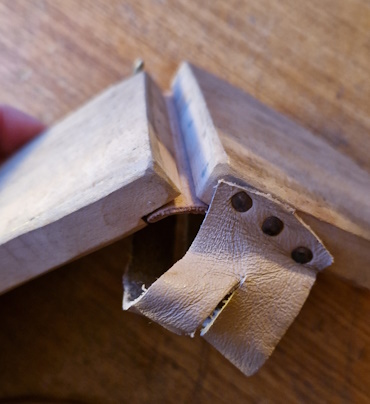
Other images
